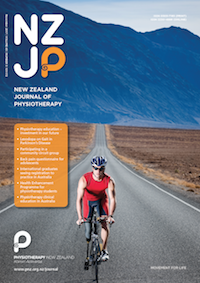The effects of levodopa on gait in Parkinson’s disease
DOI:
https://doi.org/10.15619/NZJP/45.3.02Keywords:
Parkinson's Disease, Levodopa, Gait, PhysiotherapyAbstract
This literature review aimed to explore the effects of levodopa on gait in Parkinson’s disease. Understanding the degree of and fluctuations in spatiotemporal, kinematic and kinetic gait variables over the course of the levodopa cycle aids clinicians in determining the effectiveness of treatment. A literature search was carried out between August 2015 and October 2015. Databases were searched and abstracts were read for suitability. Appropriate articles were read in full and their reference lists were checked for further relevant titles. The evidence suggests during the ‘off’ phase of the levodopa cycle, the Parkinson’s disease gait is considerably slower, shuffling and flexed compared to that of healthy age match controls. During the ‘on’ phase, spatiotemporal, kinematic and kinetic gait parameters appear to improve compared to the ‘off’ phase, although the improvements are still less than that of healthy matched controls. The effects of levodopa on Parkinson’s disease gait are dependent on the stage of the medication cycle. Further research is needed to evaluate the effects of levodopa on gait in functionally relevant settings.


